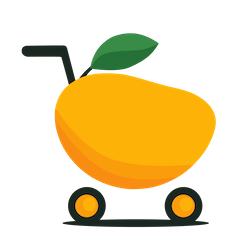If you just want the 30-day action plan, go here.
Publishing has changed a lot over the last decade. Remember when publishing meant thick newspapers on your doorstep and glossy mags on the bookshelves?
Those days aren’t gone entirely but they’ve been replaced by something much more powerful: digital publishing.
According to Business Wire, digital publishing is expected to grow by $105.96 billion in 4 years to reach $79.6 billion in 2028 (CAGR [Compound annual growth rate] of 11.3%).
Online technology is changing how we create, share and consume online content. But what is digital publishing and why should you care?
What is Digital Publishing
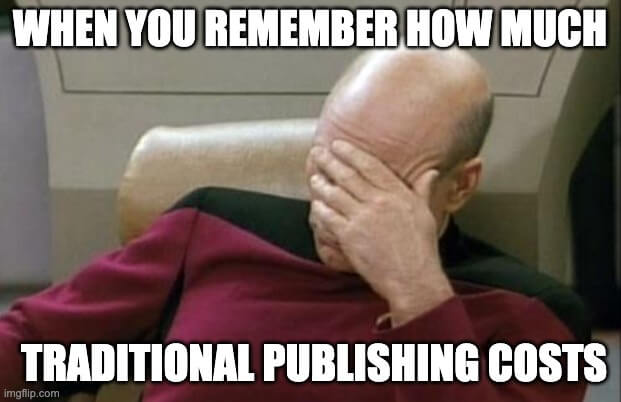
(thanks to Imgflip for the memes)
Digital publishing is the modern version of traditional publishing but without the paper and ink. It’s everything from the e-books you read on your Kindle to the news articles you scroll through on your phone to the newsletters in your email inbox.
Today’s most popular forms of digital publishing are:
• E-books and online magazines
• Blog posts and online articles
• Email newsletters
• Podcasts and audio content
• Online courses and paid content
• Digital newspapers
• Interactive content and apps
The beauty of digital technology is its accessibility. Unlike traditional publishing where printing thousands of copies can cost a small fortune…
The digital publishing industry lets anyone with a computer and internet connection become a publisher. A food blogger sharing recipes, a teacher creating online courses or a business owner writing industry insights – they’re all digital publishers creating digital publications.
Digital Publishing Platforms
Just as a traditional publisher needs a printing press, digital publishers need their own set of tools.
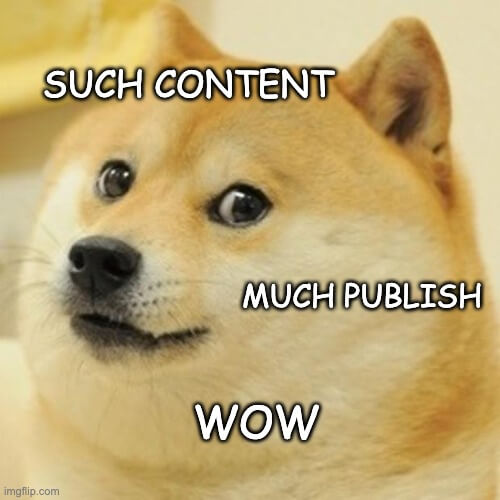
But don’t worry – they’re much more affordable and user-friendly than you might think.
Popular platforms for different needs:
For Beginners:
WordPress: For blogs and websites ($10-30/month)
Substack: For newsletters (free to start)
Medium: For writers who want a ready-made audience
For Growing Publishers:
Ghost: Advanced blogging platform ($30-100/month)
Kajabi: All-in-one platform for courses and paid content ($119-319/month)
Teachable: For online courses ($29-249/month)
CartMango: For online courses too, but much more affordable than Teachable or Kajabi (coming soon)
For Professional Publishers:
Adobe Experience Manager: Enterprise level publishing
WordPress VIP: High traffic websites
Custom Solutions: Built for you
But here’s the thing about choosing a publishing platform – it’s not just about choosing the most popular option. Think of it like choosing a car. A sports car might be great but it’s not much use if what you really need is a family minivan.
Things to consider when choosing your platform:
Your budget and expected ROI
Technical skills (yours or your team’s)
Type of content you’ll create
Your audience’s preferences
Growth plans for the next 1-2 years
Digital vs Traditional: A Real-World Comparison

Let’s talk about what makes digital publishing different from the traditional print publishing process.
Imagine you’re publishing a cookbook. In the traditional world you’d need to print at least 1,000 copies upfront, costing anywhere from $5,000 to $10,000 before selling a single copy. That’s what traditional media is. Ouch!
Here’s a cost breakdown for both:
Traditional Publishing Costs:
Initial print run (1,000 copies): $5,000-7,000
Storage fees: $200-500/month
Distribution: $2,000-4,000
Marketing basics: $3,000+
Total upfront investment: $10,000+

Digital Publishing Tools Costs:
Website/platform: $100-300/year
Design tools: $200-500/year
Digital marketing tools: $500-1,000/year
Optional professional help: $1,000-2,000
Total upfront investment: $2,000-4,000
The beauty of digital publishing?
Most of these costs can be scaled up as you grow, not like traditional publishing methods where you need everything upfront. Additionally, you save money when you choose digital publishing.
Digital Publishing Business Models
Let’s talk about everyone’s favorite topic: making money. Digital publishing offers several ways to earn income and the best part is you can mix and match what works for your audience.
Popular Revenue Streams That Actually Work:
Primary Income Sources:
Premium subscriptions ($5-15/month per subscriber)
Online courses ($97-497/course)
Digital products (ebooks: $7-27, templates: $17-47)
Advertising ($2-20/1,000 pageviews)
Additional Revenue Opportunities:
Sponsored content ($200-2,000 per piece)
Affiliate marketing (5-30% commission)
Consulting services (from your authority)
Community memberships ($10-50/month)
Take Morning Brew for example. They started as a simple financial newsletter and grew to over 2.5 million subscribers by making complex business news easy to understand and fun to read. They didn’t try to compete with The Wall Street Journal; instead they found their own voice and built an audience.
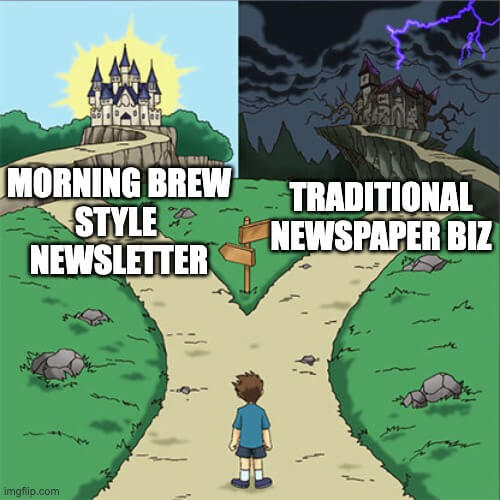
Content That People Actually Want to Read
Here’s your content marketing strategy and a truth bomb:
The internet doesn’t need more content – it needs better content – high quality content. Creating content for digital publishing isn’t about writing whatever comes to mind and hoping for the best. You need a solid mar
Key Elements of Good Content Creation
Clear value proposition (what problem are you solving?)
Unique perspective or insight
Easy to follow structure
Actionable takeaways
Engaging visuals or examples
Real-World Content Types
How-to guides and tutorials
Problem-solving articles
Expert interviews and case studies
Industry analysis and trends
Personal experience stories
Pro Tip: Think of your content like a conversation with a friend. You wouldn’t dump complex jargon on them – you’d explain things in a way they’d understand and appreciate.
Getting Your Digital Content in Front of the Right Audience
Creating great content is only half the battle – you need people to actually see it. Think of digital distribution like throwing a party. You can have the best food and music in the world but if nobody knows about your party you’ll be dancing alone.
Distribution Channels by Content Type:
Written Content
Email newsletters (your most valuable asset)
LinkedIn (for business content)
Medium (for general interest articles)
Industry-specific forums
Visual Content
Instagram (for lifestyle and food)
Pinterest (for how-to’s and recipes)
YouTube (for video tutorials)
TikTok (for short-form video content)
Email newsletters might seem old school but they’re like having a direct line to your audience’s attention. The New York Times has over 15 million newsletter subscribers for a good reason – emails land right in your audience’s inboxes away from the noise of social media.
And with emails, here are the benefits:
1/ You aren’t controlled or limited by an “algorithm”
The social media platforms control how much reach / eyeballs you get with their so-called “algorithm”. With emails, you have “a direct line” to people’s email inbox. This is akin to a red carpet at the Oscars.
2/ (A lot) more focused attention
Social media / YouTube, etc. are VERY noisy marketplaces. Everyone is posting about their personal lives, dogs, cats, flexing how rich or cool their lifestyles are, etc. Getting attention is super challenging.
Emails are much less noisy. Granted, you’re still competing with other email messages in their inbox, but the volume is significantly less.
3/ You OWN the email addresses
Your social accounts can get shut down overnight, even if you do nothing wrong. With emails, you always OWN your audience’s email address. Nobody can take it away from you.
No matter what happens, you always have direct line to these peeps who’re interested in what you do.
Measuring What Works (And What Doesn’t)
Remember the days when magazine publishers had no idea if anyone actually read their articles? Digital publishing has changed all that. These days we’re talking “digital magazines”. Now you can see exactly how people are interacting with your content but don’t get overwhelmed by all the numbers.
Key Metrics That Matter:
Engagement Metrics:
Time spent reading (3+ minutes)
Scroll depth (how far people read)
Return visits (loyal readers)
Email open rates (20%+ is good)
Growth Metrics:
Monthly unique visitors
Email list growth
Social media engagement
Conversion rates
Here’s a real-world example: Let’s say you publish an article about making sourdough bread at home. Through analytics you discover:
People spend 7 minutes reading (great!)
60% scroll to the bottom (good)
Many drop off at the “maintaining starter” section (needs work)
Lots of clicks on recommended tools (monetization opportunity)
Making Your Content Work Everywhere
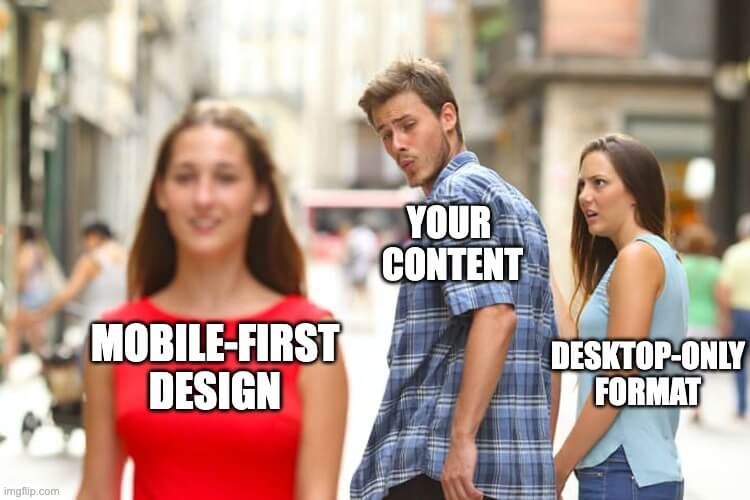
These days people might start reading your article on their phone during their morning commute, continue on their work computer during lunch and finish it on their tablet in bed.
Mobile-First Checklist
Short paragraphs (2-3 sentences max)
Clear headings and subheadings
Font size 16px minimum
Fast-loading images
Easy-to-click buttons and links
The Future of Online Publishing
The digital publishing world is always changing but don’t let that freak you out. Instead stay focused on the trends that matter:
Key Trends to Watch:
AI-assisted content (but keep the human touch)
Interactive content experiences
Voice-optimized content
Personalized reading experiences
Community-driven content
Practical Ways to Get Ahead:
Try new things regularly
Listen to your audience
Learn new tools
Quality over quantity
Be real
Your 30-Day Action Plan
Starting anything new can feel like building a house without a blueprint. Let’s break down your first month in digital publishing into bite-sized, actionable steps.
Week 1: The Foundation
Day 1: Choose and set up your publishing platform. If you’re just starting, WordPress is like a starter home – it’s not fancy but it’s reliable and you can always upgrade later. Today, do:
Create your WordPress account
Choose a host
Install WordPress
Test you can log in
Day 2: Today is all about looking professional. Choose a clean, simple theme that matches your content style. Don’t get overwhelmed by fancy designs – focus on readability and navigation.
Day 3: Create your basic pages. Think of these as the rooms in your digital home:
Homepage: Your front door
About page: Tell your story
Contact page: Make it easy for readers to find you
Privacy policy and terms (yes, you need these!)
Day 4: Set up your site’s navigation. Just like a well-organized house needs clear paths, your website needs navigation. Create your menu and add footer links to help readers find what they need.
Day 5: Install the basic plugins that will help protect and grow your site:
An SEO plugin like Yoast
A security plugin
A backup solution
A caching plugin
Day 6: Mobile day. Most of your readers will be on their phones so make sure your site looks good on mobile. Test everything on different screen sizes and fix any issues you find.
Day 7: Final checks before launch. Think of this as your pre-launch inspection:
Test all links
Check speed
Test contact forms
Verify social media links
Week 2: Your First Content
Day 8-9: Write your first cornerstone article. This is like the foundation of your house – it needs to be solid. Choose your most knowledgeable topic and create a comprehensive guide that shows off your expertise. Don’t rush this; take two days to make it good.
Day 10: Create your content calendar for the next month. Be realistic – it’s better to publish two great articles a week than five mediocre ones. Look at what your future readers will be searching for and plan around that.
Day 11: Set up your email marketing system. Choose a provider like BirdSend or MailChimp. Create a simple welcome email that new subscribers will get. Remember, your email list will become your most valuable asset.
Day 12: Design your lead magnet – something free and valuable that will encourage email signups. This could be:
A checklist
A mini-guide
A template
A resource list
Day 13-14: Write two more articles, on topics that support your cornerstone content. These should be shorter but still valuable. Think of them as branches growing from your main trunk.
Week 3: Distribution and Analytics
Day 15: Set up Google Analytics and Search Console. These are your dashboard tools – they’ll tell you what’s working and what isn’t. Don’t worry about understanding everything yet; just get them installed right.
Day 16: Create social media accounts for your digital publication. You don’t need to be everywhere – choose 2-3 platforms where your target audience hangs out most. Set up full profiles with consistent branding.
Day 17: Write another piece of content, this time incorporating feedback from any early readers or comments you’ve received. Look at what people are asking about – these questions often make great future articles.
Day 18: Set up a basic SEO strategy. Research keywords for your next few articles using free tools like Google’s Keyword Planner. Look for terms that have decent search volume but not too competitive.
Day 19: Create templates for your regular content. This includes:
Article outlines
Social media posts
Email newsletters
Featured image designs
Day 20-21: Write two more articles using your new templates and SEO research. You should be getting faster at this now.
Week 4: Optimization and Growth
Day 22: Review your analytics. Look for:
Which articles are getting the most views?
How long are people staying on each page?
Where is your traffic coming from?
Use this to plan your next content.
Day 23: Optimize your best article. Add:
More detail
Better images
Internal links to your other content
A clear CTA
Day 24: Focus on speed and performance. Run your site through tools like GTmetrix or PageSpeed Insights and make the fixes. A faster site means happier readers and better search rankings.
Day 25: Send your first email to your subscribers. Share your best content from the past few weeks and give them a sneak peek at what’s coming next.
Day 26: Contact other publishers in your niche. Start building relationships – comment on their articles, share their content, join their communities. Don’t pitch them yet; focus on making real connections.
Day 27-29: Create your content plan for month two using everything you’ve learned so far. This includes:
Article topics and keywords
Publication schedule
Email newsletter themes
Social media content calendar
By day 30 you should have:
A live website
7-8 quality articles
A growing email list
Basic analytics set up
Month two plan
Remember this is a guideline – adjust to your situation and time available. Consistent progress not perfection. Even if you can only spend an hour a day, stick to the schedule and adjust the tasks to fit your time.
Don’t get discouraged if it takes longer than planned. Every successful digital publisher started exactly where you are. Focus on creating value for your readers and the rest will follow.
Making Money Without Selling Your Soul
Let’s talk about the elephant in the room – making money. Many new digital publishers feel guilty about monetizing their content but remember: quality content takes time and effort to create and there’s nothing wrong with being paid for your work.
The key is to start small and grow with your audience. Start with one or two monetization methods and master those before expanding. Most successful publishers find that diversifying income streams is the most stable but that doesn’t happen overnight.
Learning From Real-World Successes and Failures
Every successful digital publisher has a story of trial and error. James Clear, author of “Atomic Habits,” wrote for years before his blog took off. Now his articles reach millions but he started just like everyone else – with a small audience and imperfect posts.
Common Mistakes to Avoid:
Trying to please everyone instead of your target audience
Perfectionism that prevents you from publishing
Copying others instead of finding your own voice
Trying to be everywhere
Looking Ahead: Your Publishing Future
Digital publishing in 2024 and beyond isn’t just about writing articles or creating videos – it’s about building relationships with your audience. The most successful digital publishers aren’t just content creators; they’re community builders. Think about where you want to be in a year. Maybe you want to have 1,000 loyal readers or maybe you want to turn your publication into your full-time income.
Start by focusing on one main goal for your first 6 months. It might be building an email list of 500 engaged subscribers or publishing twice a week. Whatever your goal make it specific and achievable. Remember every major digital publisher started exactly where you are now – with an idea and the courage to share it.
What’s Next
Digital publishing starts with 1 post. Start by choosing your main platform and commit to it for at least 3 months. Create content that solves real problems for real people. Whether you’re teaching cooking techniques or sharing financial advice, focus on providing value.
Build your email list from day one using a tool that suits your needs. Social media followers come and go but email subscribers are gold in the digital publishing world. If your email needs are simple and you want a no-frills, fast, and affordable email tool, check out BirdSend.
Digital publishing isn’t a sprint; it’s a marathon. Focus on long-term growth not overnight success. Start small, learn from your audience and adjust as you go. The beauty of digital publishing is that you can always change and improve – nothing is set in stone.
When you’re ready to publish paid content and sell them online, CartMango can be useful. It’s a cart/checkout tool for solo course creators to sell their digital products and courses.
You won’t become a successful digital publisher overnight but you will if you stay consistent, keep learning and never lose sight of your audience’s needs.
Now go – your readers are waiting.
Related
- Abandoned cart email templates
- Digital marketing terminologies and acronyms
- Affiliate marketing stats you should know
- How to sell online courses
- Creating an online course in the form of a simple PDF
- Expenses to know before building your online course
- Which video hosting solution for your online course?
- Reselling digital products
- How to sell high ticket
- Is solopreneur coaching right for you?
- Start & grow a coaching business
